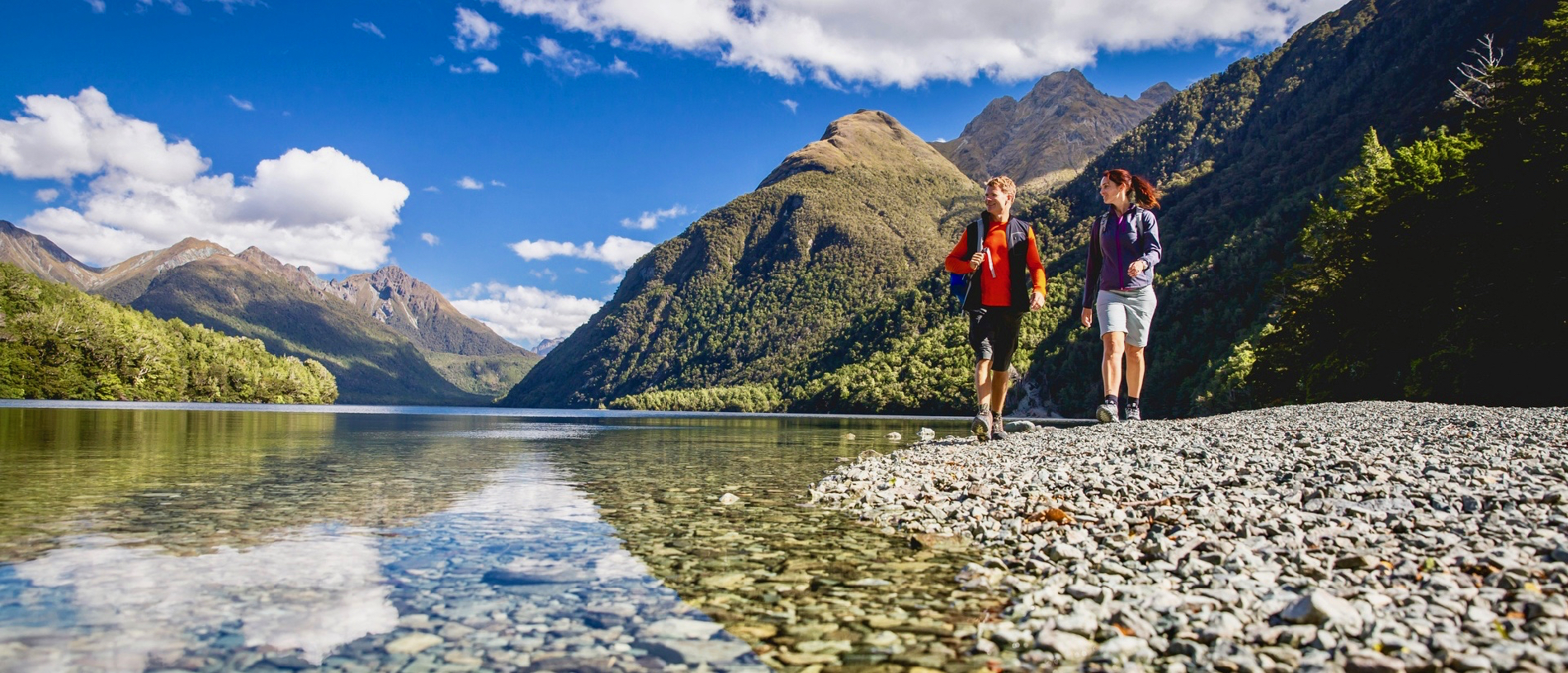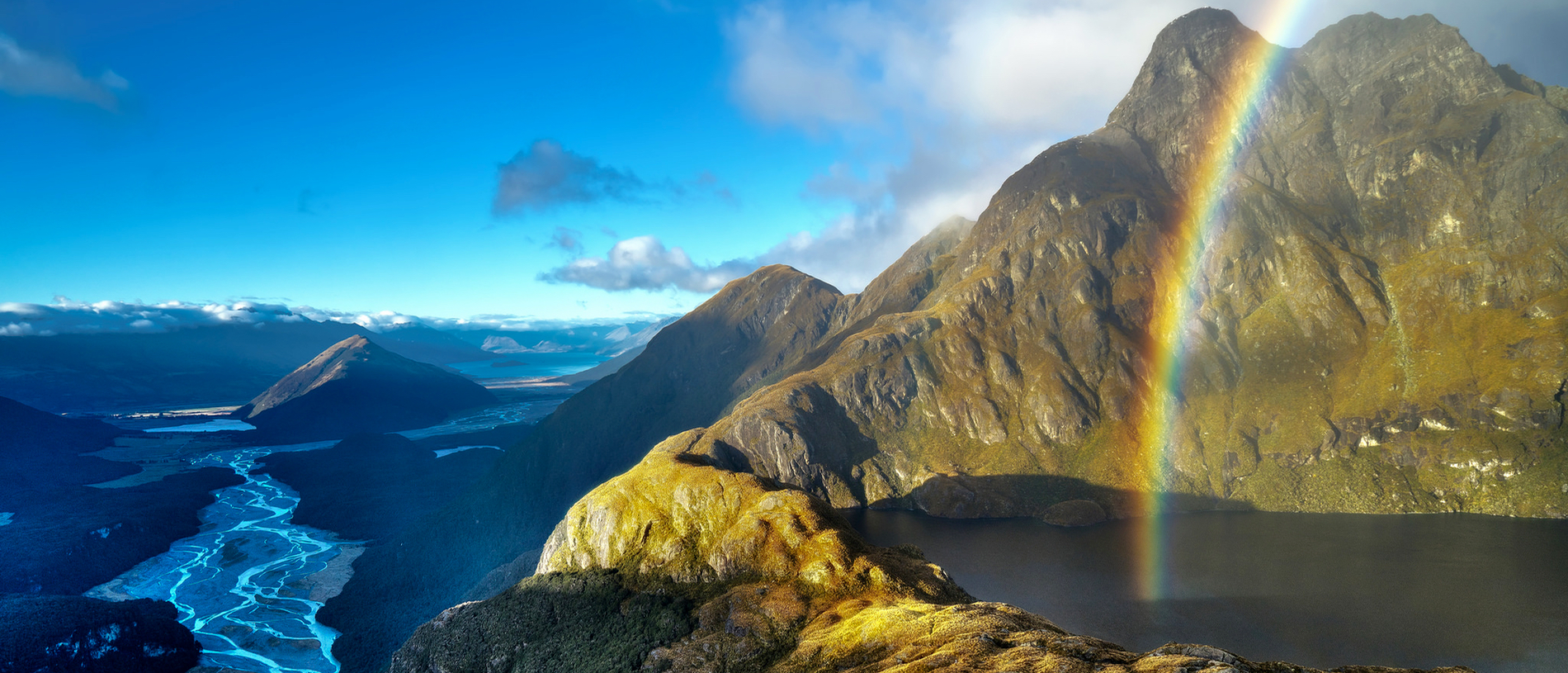
The Routeburn Track: the ultimate alpine adventure
It's one of the country’s most famous walks so, let’s get the house- (or hut-) keeping out of the way first: you’ll need to book in the heavy season.

Mount Aspiring – known to Māori as Tititea, ‘steep peak of sparkling white’ – is one of New Zealand’s highest peaks, and the park named for it is a paradise of mountains, glaciers, river valleys and alpine lakes.
It’s a hiker’s paradise, too: you can dabble in short walks, like the spectacular 30-minute Blue Pools Walk, or take on the Routeburn Track, traversing mountain saddles and passes.
Mount Aspiring is New Zealand’s third largest national park and was the awe-inspiring location for Isengard in the Lord of the Rings film trilogy. Comparable to Switzerland’s Matterhorn, Mount Aspiring itself was carved into a four-sided pyramid by ancient glaciers and is the only peak over 3000 metres outside Aoraki Mount Cook National Park.

Four hundred species of moths and butterflies exist here in the park, and 59 bird species have been recorded, including the mischievous kea. Rifleman, bellbird, South Island robin, yellow-crowned parakeet, mohua (yellowhead), tomtit, South Island fantail and New Zealand pigeon are common bush birds. Towards evening, native bats (their bodies are the size of mice) and moreporks may be seen and heard. Blue ducks and paradise shelducks live in the valleys.

The park spans a large area, from the Haast River in the north to the Humbolt Mountains in the south. Large valleys, carved out by ancient glaciers, dissect high mountain ranges. One of the most unusual areas in the park is the Red Hills ‘mineral belt’ in the southwest. Here the concentration of magnesium in the soil is so high that only a few hardy plants survive.

Māori were here first, searching for food and pounamu.
‘Greenstone trails’ along the mountain passes are still in use today, such as the Haast Pass on State Highway 6. Geologist Julius von Haast first led a party over Haast Pass Tioripatea in 1863.
Throughout the year, Māori came from Foveaux Strait and coastal Otago to the inland lakes to collect kākāpō, kākā, kererū and tūī from the forest. For the first 200 years of Māori settlement, there would also have been moa along the forest edges. There were seasonal camps around the shores of Lakes Wānaka and Hāwea and in the Makarora valley, which they knew as Kaika Paekai – the place of abundant food.
The first European to see Mount Aspiring/Tititea was government surveyor John Turnbull Thompson, in 1857. After European settlement, many of the valleys were farmed and exploited for minerals such as scheelite. Remnants of these activities can still be found in and around the park.

And when you’ve soaked up as much outdoors as you can, nearby Wānaka has all the comforts you need – great restaurants, plentiful accommodation and the beauty of Lake Wānaka on its doorstep.
The Mount Aspiring National Park is home to the Routeburn Track, New Zealand’s most popular transalpine track, which links the Hollyford and Routeburn Valleys via Harris Saddle. This three-day walk passes through spectacular scenery along the crystal-clear Routeburn and provides spectacular views of the Hollyford Valley and Darren Mountains.
For a shorter stroll, the beautiful Blue Pools are an easy walk through silver beech/tahina forest and over a swing bridge to a viewing platform overlooking the magnificent crystal-clear pools at the mouth of Blue River. Large brown and rainbow trout can often be seen feeding in the pools.

Other short walks are concentrated at the access road-ends at the Matukituki Valley and Glenorchy. From Wānaka, popular short walks include the Aspiring Hut Walk and the Rob Roy Track.
The Rees-Dart river circuit, Gillespie Pass Circuit, Greenstone and Caples tracks and the Wilkin Valley are longer valley walks, with options to continue over higher passes and into alpine areas. The Rees-Dart Track, a five-day tramping circuit, follows the Rees and the Dart rivers through the southern end of the park.
Most of the park’s alpine areas lie over the Southern Alps. Mountaineering, ski touring, ice climbing, rock climbing and abseiling are possible within the area, for the experienced. The park also provides mountaineers with a wide choice of ascents, from the grimly named Mount Awful to Mount Aspiring itself.
Jetboat trips can be enjoyed on a number of the park’s larger rivers such as the Dart and the Wilkin, and aerial sightseeing by helicopter or fixed-wing plane is available from Haast, Makarora, Wānaka, Queenstown and Glenorchy.